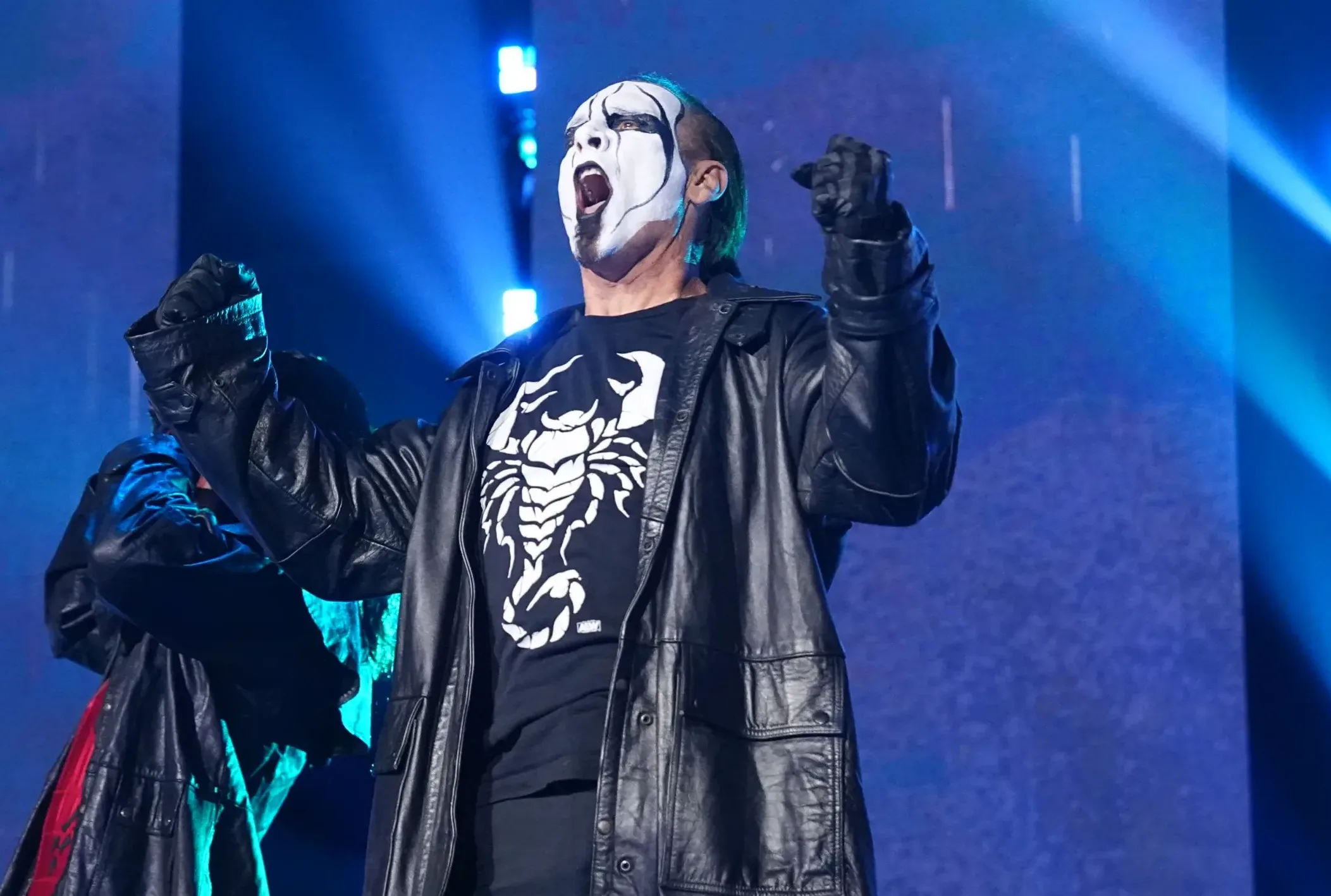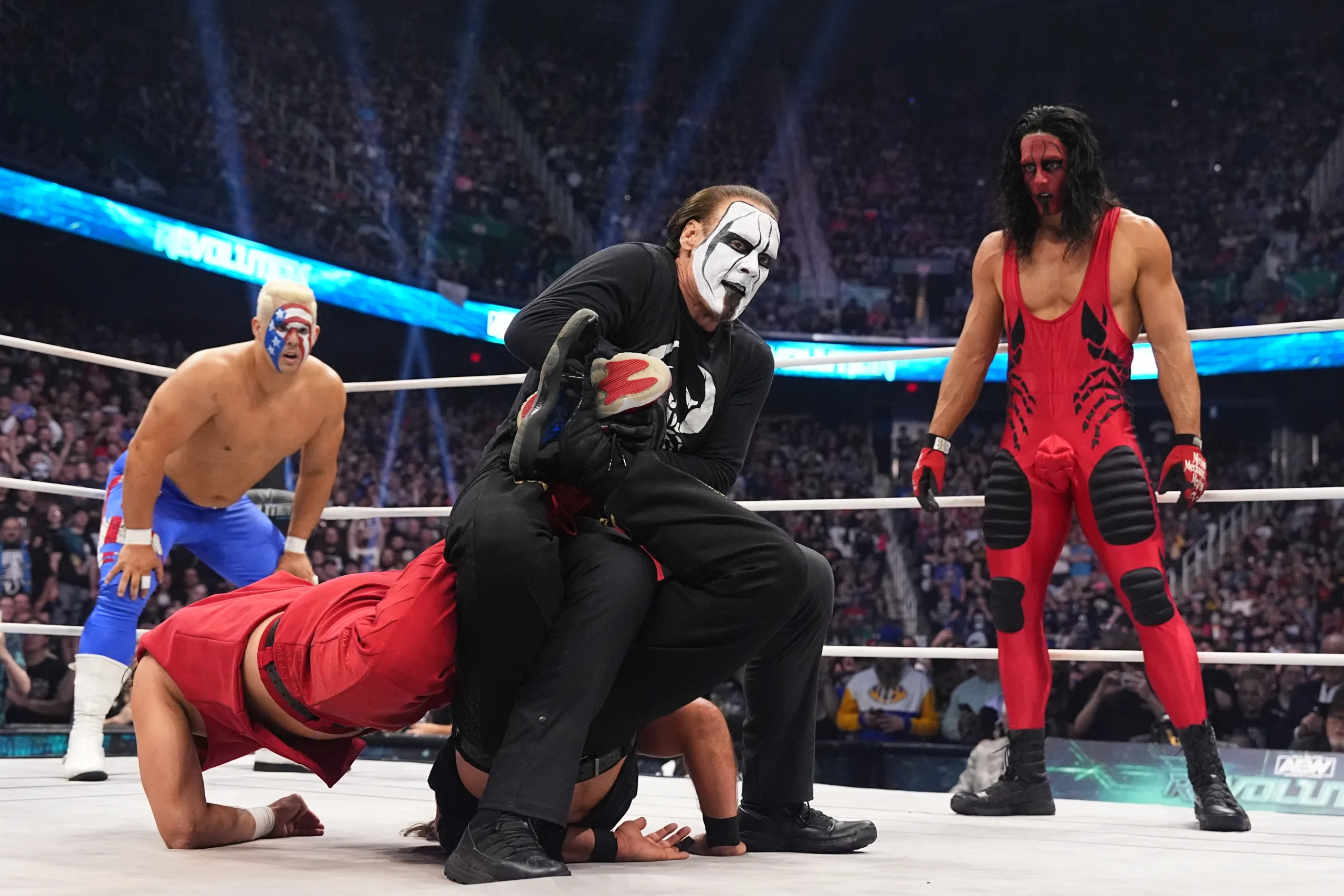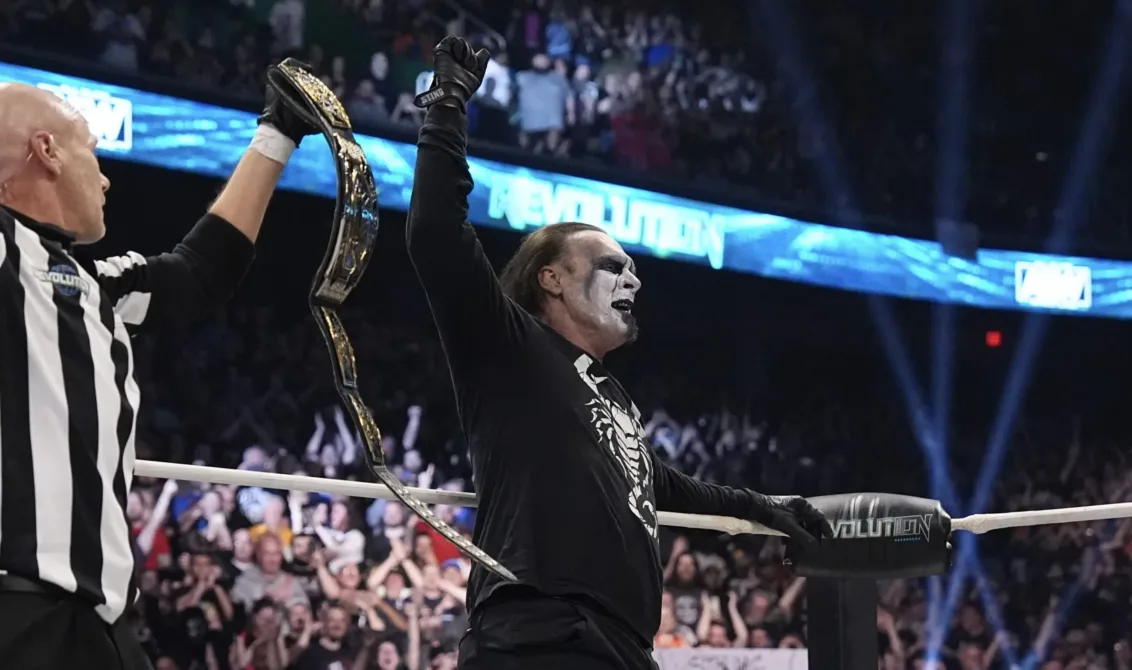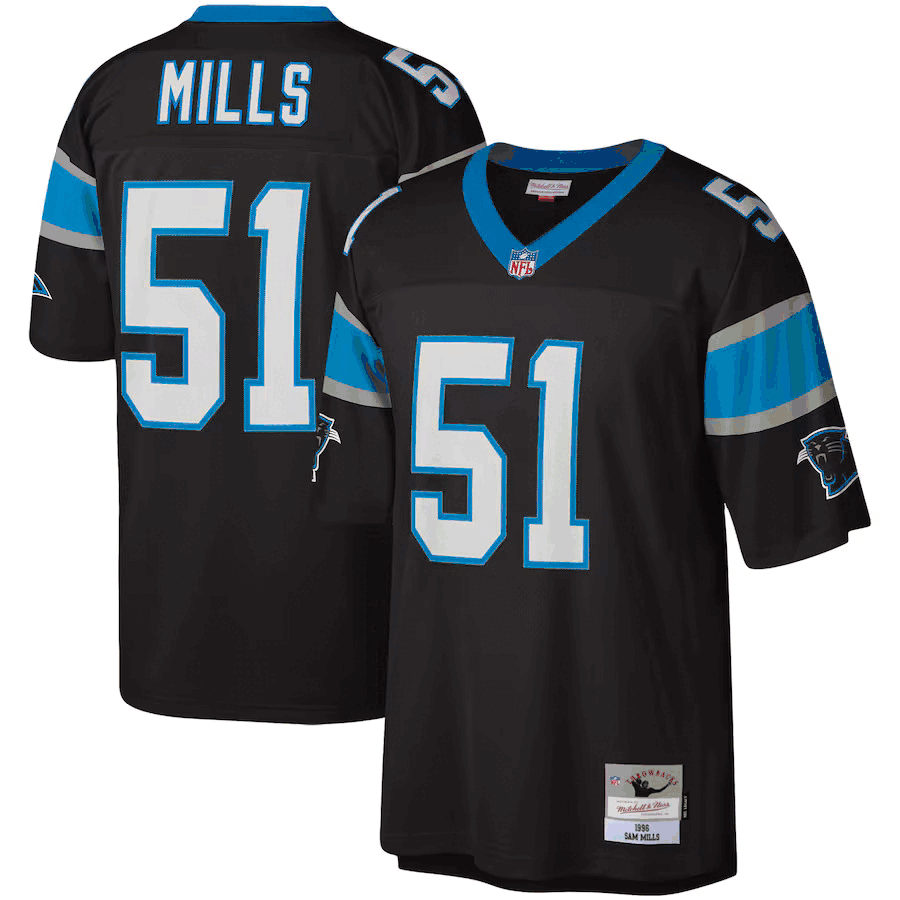 By Grant Golden
By Grant Golden
March 11, 2024
Photo: Lee South / AEW
This month marked the end of an era for professional wrestling, as the iconic Sting retired after nearly 40 years in the ring with his final match in Greensboro at AEW Revolution. Few figures in wrestling history command the respect and admiration of both wrestlers and fans alike, so when Sting announced his impending retirement last October, the entire industry took notice. When wrestlers “hang up their boots,” it’s seldom on their own terms– many are plagued by injuries and never get their proper send-off. That’s part of what made Sting’s departure so special. With a hand-picked opponent in The Young Bucks, and on his own timeline at the arena of his choosing (Greensboro Coliseum), Sting ended one of the greatest wrestling careers of all time.

At Revolution, Sting continued his career-long tradition of overcoming the odds by retaining the AEW Tag Team Titles in his final match in front of nearly 17,000 fans in attendance. The 64-year-old wrestler went through tables and glass plates, ate superkicks and EVP Triggers (The Young Bucks finishing move), but alongside his partner Darby Allin stood tall as victor. Fans cheered and wept and chanted, “you still got it,” as the entire locker room poured onto the stage to celebrate. It’s rare to see such uniform reverence for a figure in the wrestling industry.

Coming up in the ‘80s, Sting rose to prominence with companies like Charlotte-based Jim Crockett Promotions, where he began a career-long rivalry and friendship with Ric Flair, including a match at Clash of the Champions I at Greensboro Coliseum in 1988. As JCP evolved, eventually being bought out and turned into World Championship Wrestling, Sting served as an anchor throughout the company’s duration. Holding the NWA World Heavyweight Title and the WCW World Heavyweight Title, Sting became a fixture across the globe with his ability to captivate and connect with fans.
Ever the innovator, Sting adapted with the times throughout his career in the industry. Whether that be through his wrestling techniques or his image, Sting was a dynamic force in every sense. Beginning with a brightly colored “surfer” persona throughout the late ‘80s and early ‘90s, Sting pivoted towards a darker, more enigmatic persona in the mid-’90s inspired by Brandon Lee’s The Crow. This “Crow” Sting served as one of the major foils against the cultural monolith, the New World Order (nWo) in WCW, arguably one of the most popular groups in the history of professional wrestling. And while many viewed the hellish, underhanded tactics of the nWo as endearing in the edgy world of ‘90s culture, Sting was a pariah that stood tall against the group, earning the love of generations of fans.

WCW was at one point the largest wrestling company in the industry, and many of their biggest events were held in the South, including the first several instances of their marquee event Starrcade. Greensboro, North Carolina is rich in wrestling history, so it comes as no surprise that Sting would choose the city for his final match.
After WCW, Sting’s career continued in both Total Nonstop Action Wrestling and a short, divisive run in the WWE. He was inducted into the WWE Hall of Fame in 2016 and announced his first retirement from the industry later that year. It was already a storied career, and his induction formally brought him into an esteemed class of wrestlers, but his final run in All Elite Wrestling put him in a class all his own.
For the last four years, Sting has defied the odds, and frequently gravity as well, as he’s leapt off balconies and scaffolds, recapturing the hearts of fans. AEW placed Sting in the unique position to go out on his own terms and it resulted in a four-year undefeated run and AEW Tag Team gold.
And while Sting’s in-ring ability is certainly nothing to balk at, he as a character and human is what propels him to higher status. In an industry that’s been marred with dark revelations around some of their most revered figures, Sting serves as a bright light, an untarnished hero that generations of fans look up to. For nearly 40 years, fans donned whatever face paint he was wearing at the time, howled back his trademark primal shout, and reveled in the work of “The Icon,” Sting.

Throughout Sting’s career, he’s served as a symbol of perseverance and determination, allowing fans to suspend their disbelief as he descended from rafters, bat in hand, overcoming the odds against rivals like Hulk Hogan and the nWo, Ric Flair and The Four Horsemen, Vader, Lex Luger, and many more. That’s why nearly 17,000 people descended upon Greensboro to pay their respects. In the very arena where Sting wrestled many of those long-running foes, we saw one last example of the enduring bond between this iconic wrestler and his fans. As AEW CEO Tony Khan put it in the post-event press conference, “Sting outran time.” It was his last act of defiance, and one that the entire wrestling industry is thankful for.
Read next:




